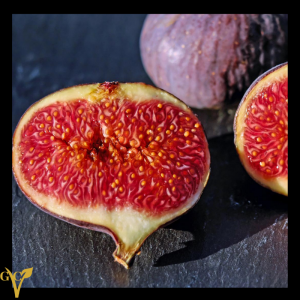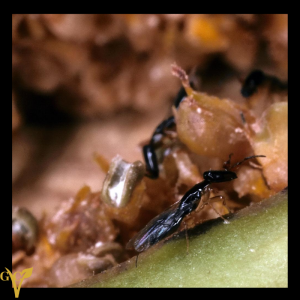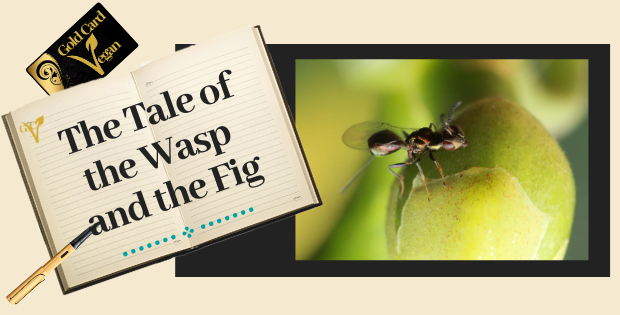Settle in and I’ll tell you the tale of the wasp and the fig.
Once upon a time…
Kidding, it’s not a fairy story I’m just grabbing your attention.
First, let’s begin with a very quick botany lesson. A fig is not a fruit. True statement. The fig is actually (in botanical terminology) an inflorescence. The meaning of inflorescence is a cluster of flowers on the main axis (peduncle). The timing of the flowering also comes into it, but that’s just going to complicate it for you. Look it up in the Encyclopaedia Britannica

However, the fig is slightly different in that it is an inside-out inflorescence. They are hollow, fleshy structures composed of a modified stem which is line with hundreds of minute flowers.
Now that you know the basic composition of the fig and all its flowers obviously it is going to need to be pollinated. Enter the wasp. The fig wasp to be precise.

The optimum word there is ‘enter’. That’s right. The wasp has to pollinate the fig but it is the weird way this takes place that causes a very grey area for vegans.
Let me explain.
A female wasp gathers pollen from the fig tree she was hatched in. She then mates with her brothers who have also hatched in the same fig. These wonderful brothers then carve an escape hatch for her setting her free, they are not so lucky as that’s there sole purpose in life so they are destined to remain to die in the fig.
I know this is complicated, but try to keep up.
The freed female now needs to find a fig to lay her eggs. She does, but to enter the inflorescence she must first crawl through an exceptionally tiny hole. Sometimes the hole is so small she will shed her wings and antennae to order to fit through.
Once inside she moves through the fig depositing her eggs and simultaneously shedding the pollen. After she has done this, she dies and is consumed by the fig. When the wasps are hatched the cycle begins again. The females are mated with, collect pollen and leave the fig. Nature still manages to impress me!
I’m sure the question you now want to ask is “do we eat wasps when we eat figs?”
The answer is “not necessarily”.
Commercially grown figs are not grown this way. These trees are of a variety (Ficus carica) that does not need pollination to produce fruit. So I think you can be 90% certain that the fig you are about to eat will not contain any wasp.

But you can also think of it this way. The wasps are not being ‘harmed’ specifically for the production of figs. This is the natural life cycle of the fig-wasp and humans have not had any hand in it at all. They are not like the honey-bee which is exploited living in man-made hives and transported all over the countryside. No, the wasp lives inside the figs, does everything it is supposed to do and make it possible for the trees to produce more figs for more wasps.
The tale of the fig and the wasp brings a sharp reminder to us all that all of nature works in beautiful symbiotic relationships. If we could learn to live within these boundaries what a beautiful world we would have.
The tale of the fig and the wasp brings a sharp reminder to us all that all of nature works in beautiful symbiotic relationships. #beautyofnature #natureatitsbest #figwaspsrule Share on XAnd for my tuppence worth – figs are perfectly acceptable for vegans with the added advantage of being delicious.
Until next time…









0 Comments